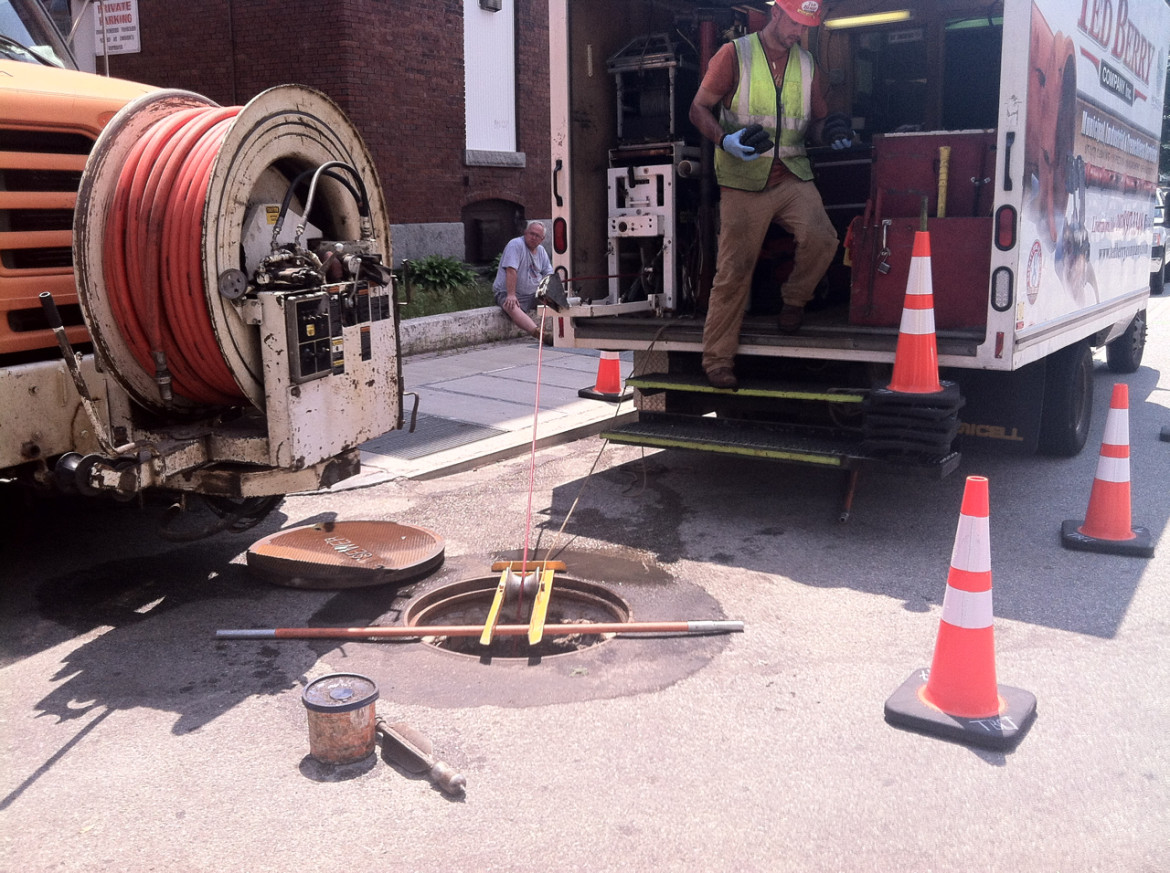
If you’ve noticed a lot of road construction crews at work in the downtown area, it’s all part of the city’s 20-year, $165 million roads project, to replace underground pipes that are beginning to fail.
The Combined Sewer Overflow program is not unique to Manchester, or even New Hampshire, said Fred McNeil, chief engineer for the city’s Environmental Protection Division.

“It’s something that happened all over the East Coast and Mid-Atlantic states. When they built underground drainage systems in the 1800s they only used one pipe, so when rain events happen, all the rain goes into the sewer and exceeds the capacity,” McNeil said.
“We have CSOs that go into the river, so you’re actually getting some sewage in the river during rain events. We just spent $58 million over 10 years to successfully correct this problem on the West Side. Now, we’re working on the East Side,” McNeil said.
Aside from the scheduled work, which will continue through the year 2032, his crews are being dispatched regularly to take care of “hot spots” like the one in front of the Wild Rover on Kosciuszko Street.
“A lot of cities have aging and failing infrastructure, like we do. We have a crew out now at the Rover due to the flooding problem they are having,” said McNeil.
One of the underground pipes shifted, restricting water flow so that every time it rains, the water backs up inside the pub.
On Wednesday crews were at the scene running a tiny TV camera through the sewer to see what the pipes look like inside and see how best to make the repair.

“It’s very exciting, what we’re doing in the big picture. What’s unique is that we’re also going urban revitalization as we move forward. So it’s not only new pipes; it’s new curbing, sidewalks, bike lanes – just like the one on Chestnut Street, they will be citywide,” McNeil said.
The project is being paid for through rate payer fees, McNeil said.
“When we worked on the West Side we had some federal and state funding, but that all dried up. This is all been self-funded for the past four years through our rate payer fees for the city sewer system. If you have city connected sewer, you helped pay for this – and we appreciate your business,” McNeil said.
McNeil said the city is in good financial shape to replace the 380 miles of sewer pipe, of which at least 100 feet is more than a century old.
“We have a contractor lined up to fix it next week. That’s on top of the scheduled work,” McNeil said. “We have a proactive program – mechanisms are in place for emergency work. We have to, when we have this much pipe that’s this old, failures happen.”
Look for more coverage of the comprehensive Combined Sewer Overflow program as work progresses.







